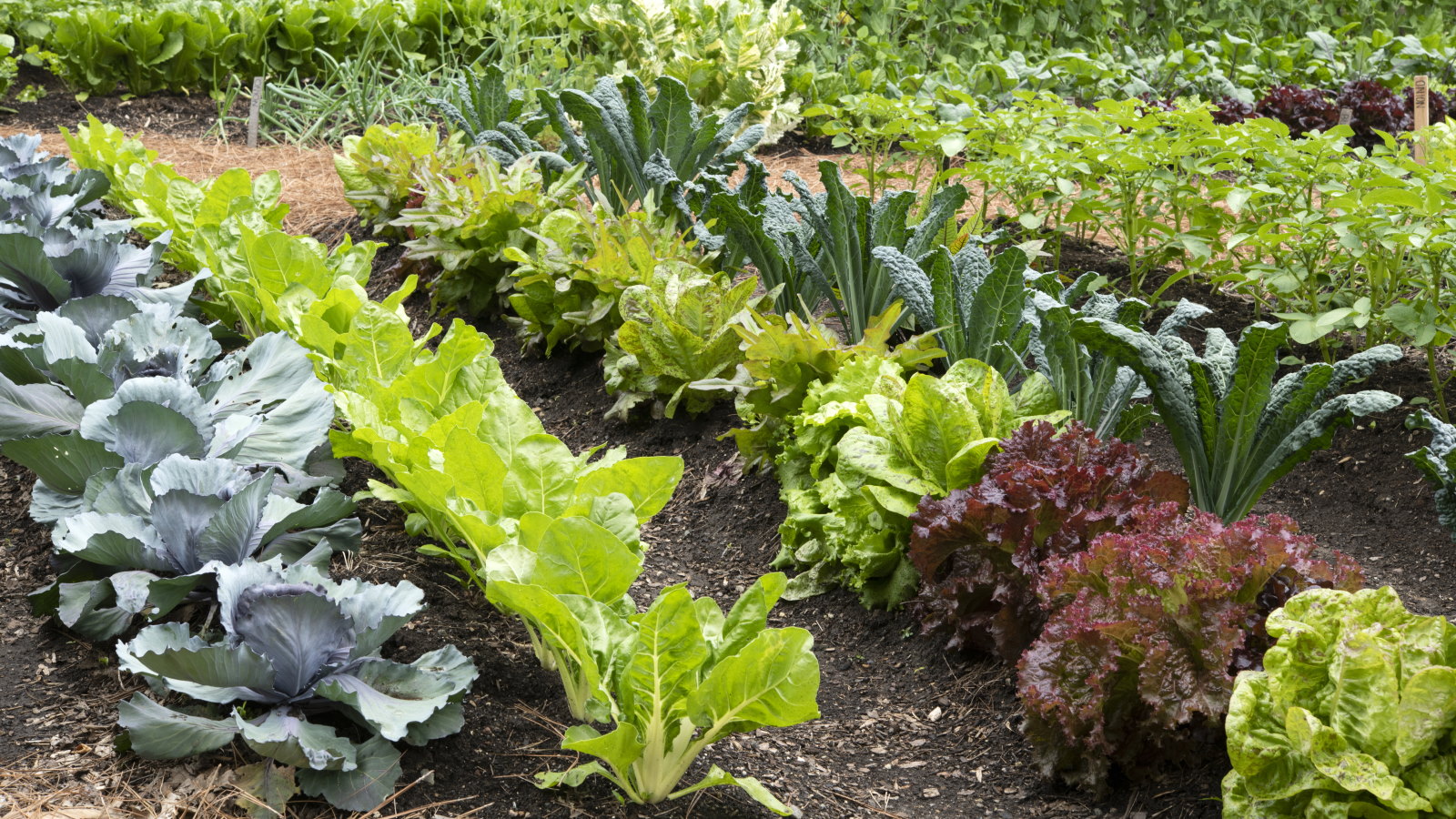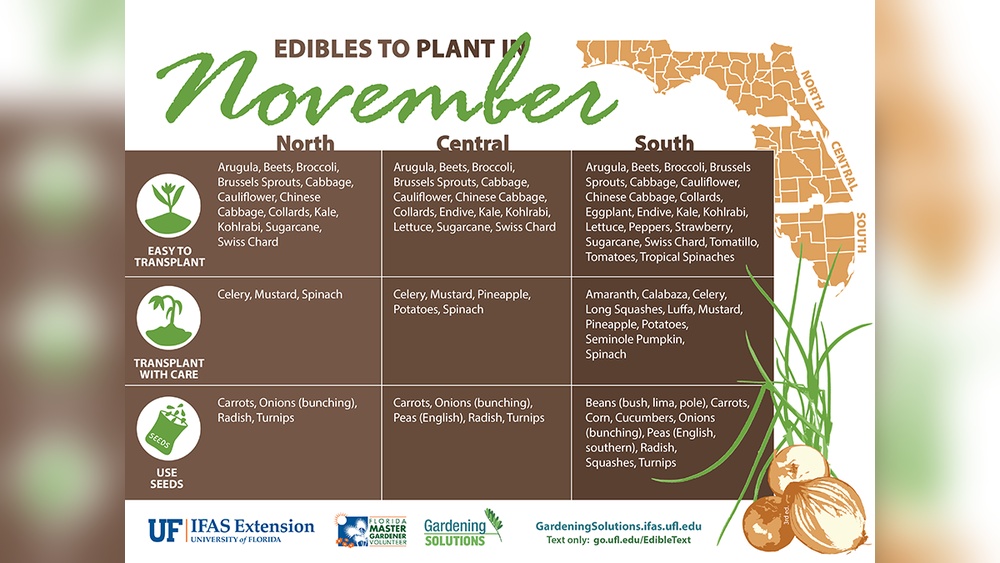As an Amazon Associate, I earn from qualifying purchases.
Are you wondering what vegetables you can still plant as November rolls in? Don’t worry—there are plenty of great options that thrive in cooler weather and shorter days.
Choosing the right veggies now can give you a fresh, tasty harvest just when you need it most. Keep reading to discover which vegetables are perfect for your November garden and how to get the best results with minimal effort.
Your garden—and your taste buds—will thank you!
Best Vegetables For November Planting
November is a great time to plant certain vegetables that thrive in cooler weather. These plants grow well in lower temperatures and shorter days. Choosing the right vegetables helps ensure a healthy garden. Here are some of the best vegetables to plant in November.
Cool-season Greens
Cool-season greens like spinach, kale, and lettuce do well in November. They grow fast and can handle frost. These leafy greens add fresh, healthy options to your meals. Plant them in well-drained soil with good sunlight. Regular watering helps them stay tender and crisp.
Root Vegetables
Root vegetables such as carrots, radishes, and beets thrive in cooler soil. They develop sweet flavors after exposure to cold. Plant them in loose, sandy soil for easy root growth. These veggies store well and provide nutrition through winter months.
Allium Family
Onions, garlic, and shallots belong to the allium family. November is a good time to plant them for a summer harvest. They need well-drained soil and space to grow. These vegetables have strong flavors and add depth to many dishes.
Legumes To Consider
Peas and broad beans are two legumes that grow well in November. They fix nitrogen in the soil, improving garden health. Plant them in fertile soil with support for climbing varieties. These legumes provide fresh, protein-rich food early in the year.

Preparing Soil For November Crops
Preparing soil for November crops is key to a healthy garden. Cold weather crops need rich, loose soil to grow well. Taking time now helps plants survive and thrive.
Good soil lets roots breathe and soak up nutrients. It also holds moisture without flooding roots. Preparing soil in November sets the stage for strong plants come spring.
Soil Testing And Amendments
Start by testing your soil. A simple test shows pH and nutrient levels. Most vegetables prefer a pH between 6.0 and 7.0.
Based on results, add amendments like lime to raise pH. Use sulfur to lower it. Add compost or manure to boost nutrients.
Mix amendments well into the top 6 to 8 inches of soil. This helps plants access nutrients easily.
Composting Tips
Compost improves soil texture and fertility. Use kitchen scraps, leaves, and garden waste.
Turn compost regularly to speed decomposition. Keep it moist but not soggy.
Apply finished compost as a top layer or mix it into soil. It feeds plants and helps retain moisture.
Mulching Benefits
Mulch protects soil from cold and erosion. Use straw, leaves, or grass clippings.
Mulch keeps soil temperature steady. It also reduces weed growth and retains moisture.
Apply mulch 2 to 3 inches thick around plants. Leave space near stems to prevent rot.
Planting Techniques For Cold Weather
Planting vegetables in cold weather requires special care. The right techniques help seeds grow strong despite chilly temperatures. These methods protect plants and boost their chances to thrive in November’s cold soil. Learn simple ways to start your garden this season.
Seed Starting Indoors
Starting seeds indoors gives young plants a warm, safe place. Use seed trays or small pots with good soil. Keep them near a sunny window or use grow lights. Maintain steady moisture but avoid waterlogging. This method helps seedlings develop before moving outside.
Direct Sowing Outdoors
Some vegetables grow well when planted directly in cold soil. Choose hardy seeds like spinach, kale, or carrots. Prepare the soil by loosening it and removing weeds. Sow seeds shallowly and cover lightly with soil. Water gently to keep soil moist without flooding.
Using Row Covers And Cold Frames
Row covers and cold frames protect plants from frost and wind. Row covers are lightweight fabrics placed over plants to trap heat. Cold frames are small, transparent boxes that create a mini greenhouse effect. Both tools extend the growing season and shield plants from harsh weather.
Watering And Maintenance
Watering and maintenance play a big role in growing healthy vegetables in November. Proper care helps plants survive cooler weather and shorter days. Vegetables need enough water, protection from pests, and the right nutrients. This section explains how to keep your garden thriving during this month.
Irrigation Strategies
Water plants early in the day to reduce evaporation. Use a drip irrigation system to deliver water directly to roots. Avoid watering leaves to prevent fungal diseases. Check soil moisture regularly to avoid overwatering. Water deeply but less often to encourage strong roots.
Pest And Disease Control
Keep an eye on leaves for bugs and spots. Remove damaged or yellow leaves to stop disease spread. Use natural pest repellents like neem oil or soapy water. Rotate crops to reduce pest buildup in soil. Keep garden clean by removing weeds and debris.
Fertilizing Tips
Apply balanced fertilizer to support steady growth. Use compost or organic matter to improve soil quality. Avoid over-fertilizing as it can harm plants. Feed vegetables every few weeks for best results. Follow package instructions carefully to avoid mistakes.
Harvest Timing And Storage
Harvesting vegetables at the right time is key to enjoy their best taste and nutrition. Storing them correctly keeps them fresh longer. Understanding when to pick and how to store vegetables helps reduce waste and saves money.
Signs Of Readiness
Look for color changes in vegetables. Leaves may turn yellow or brown. Roots should be firm and full-sized. Check the size based on the vegetable type. Soft spots or cracks mean they are overripe. Smell can also show ripeness. Fresh vegetables smell clean and earthy.
Harvesting Methods
Use clean, sharp tools to cut vegetables. Cut stems carefully to avoid damage. Pull root vegetables gently from the soil. Handle leaves and fruits with care to prevent bruises. Harvest in the morning for best freshness. Avoid wet conditions to reduce mold risk.
Storing For Longevity
Store vegetables in a cool, dark place. Use breathable bags or containers to avoid moisture buildup. Keep root vegetables in sand or soil to stay fresh. Leafy greens last longer wrapped in damp cloth. Avoid storing fruits and vegetables together. Some fruits release gases that spoil vegetables fast.

Regional Tips For November Gardening
Gardening in November needs careful planning based on your region. Different climates affect what vegetables grow well. Understanding these differences helps you plant the right crops. Here are regional tips to guide your November vegetable garden.
Northern Climates
Cold weather hits early in northern areas. Focus on hardy vegetables that tolerate frost. Plant kale, spinach, and winter lettuce. These crops survive cold and even snow. Use row covers to protect young plants. Prepare soil by adding compost for spring growth. Avoid planting warm-season crops as they won’t survive the freeze.
Southern Climates
Southern regions stay warmer longer. November is perfect for planting cool-season vegetables. Try broccoli, carrots, and cabbage. The soil still holds warmth for seed germination. Water regularly but avoid overwatering. Watch for pests that stay active in mild weather. Mulch helps keep soil moist and controls weeds.
Urban Gardening Challenges
Urban gardens face space and sunlight limits. Choose compact vegetables like radishes and baby carrots. Use containers or vertical gardens to save space. Reflective surfaces can increase sunlight for plants. Check soil quality carefully; city soil may need improvement. Keep plants away from pollution sources. Small gardens still grow fresh, healthy vegetables.

Frequently Asked Questions
What Vegetables Grow Well When Planted In November?
Cool-season vegetables like spinach, kale, garlic, and carrots thrive when planted in November. These crops tolerate cold and develop roots before winter, ensuring a strong start in spring.
Can I Plant Root Vegetables In November?
Yes, root vegetables such as carrots, radishes, and beets are ideal for November planting. They grow slowly in cool soil and can survive frost for a healthy harvest.
How Does November Planting Benefit Winter Gardens?
Planting vegetables in November allows roots to establish during mild temperatures. This leads to quicker growth in spring and yields fresh produce earlier than spring planting.
Should I Prepare Soil Differently For November Planting?
Yes, enrich soil with compost and ensure good drainage. Cooler weather slows decomposition, so adding organic matter improves soil health for November vegetables.
Conclusion
Planting vegetables in November sets the stage for fresh, healthy food. Cool-weather crops like spinach, carrots, and kale grow well now. These vegetables handle frost and thrive in shorter days. Preparing soil and choosing the right seeds helps your garden succeed.
Small efforts lead to big rewards in spring. Enjoy the process and watch your garden grow. November planting brings tasty benefits when the season changes. Start today for a green and fruitful garden tomorrow.

